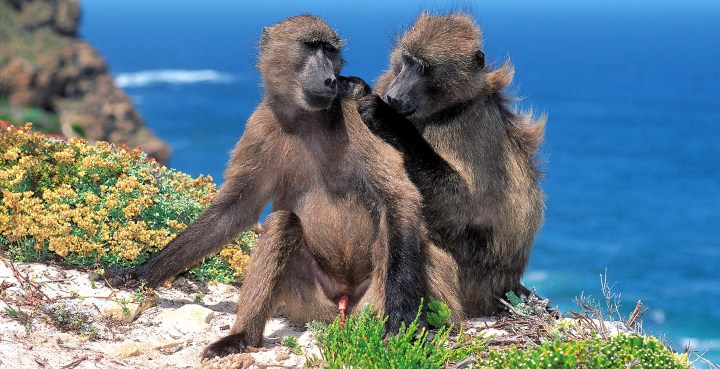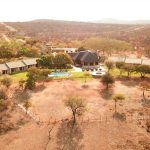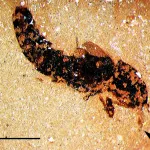OP-ED
SA in ground-breaking rethink on protection of biodiversity

As the world’s biodiversity slips ever deeper into crisis, a ground-breaking South African White Paper demands a paradigm shift to put care of the creatures with whom we share the planet at the centre of our concern.
The White Paper on the Conservation and Sustainable Use of Biodiversity, gazetted yesterday for public comment, is built around a set of definitions that, if implemented, have revolutionary implications for the welfare of animals in South Africa.
At its core is the contention that nature has value in its own right, independent of human uses, even if it does not benefit humans. Its intrinsic value, the paper says, cannot be calibrated against its economic worth.
The paper, issued by the Department of Environment, Forestry and Fisheries, comes close on the heels of a policy document that takes aim at lion farming and the intensive breeding of rhinos.
The White Paper seeks to remedy the shortcomings of the current conservation model which, it says, was founded on the historical colonial practices – entrenched by apartheid – of over-exploitation of nature and the exclusion of the indigenous and local communities.
It embodies the definition that the well-being of an animal involves circumstances and conditions conducive to its physical, physiological and mental health and quality of life, including its ability to cope with its environment.
The issue of sentience
The paper goes further. By acknowledging – and this has huge legal implications – that animals are capable of suffering and experiencing pain and are sentient requires us, in our use of animals, to show respect and concern for them individually.
The White Paper points out that, as a signatory to the International World Organisation for Animal Health (OIE), we are obliged to abide by its standards of animal welfare which recognises animals as sentient.
In South Africa the foundations for change were laid down in a landmark judgment in a case brought by the National Council of Societies for the Prevention of Cruelty to Animals (NSPCA) against the Minister of Justice in 2016. The Constitutional Court not only elevated the welfare and protection of non-human animals to a constitutional concern, but also significantly related their welfare and protection to biodiversity and the constitutional right to have the “environment protected … through legislative and other means” in Section 24 of the Constitution. It set down that:
- The rationale behind protecting non-human animal welfare has shifted from merely safeguarding the moral status of humans to placing intrinsic value on animals as individuals.
- Non-human animals are sentient beings capable of suffering and experiencing pain.
- Non-human animals are worthy of protection.
- Guardianship of the interests of non-human animals reflects constitutional values and the interests of society at large.
This was followed by Justice Edwin Cameron’s minority judgment in the case of NSPCA vs Openshaw, that recognised that animals are worthy of protection not only because of the reflection that this has on human values, but because animals “are sentient beings that are capable of suffering and of experiencing pain”.
Sustainable use
Tightly defining the status and treatment of animals has considerable implications for our use of them and the much-abused notion of sustainable use. The White Paper underscores the definition in the National Environmental Management: Protected Areas Act (NEMBA).
To be considered sustainable, it says, the use of any “component” of biodiversity may not contribute to its long-term decline in the wild, disrupt the genetic integrity of the population or the ecological integrity of the ecosystem in which it occurs.
It must ensure continued benefits to present and future generations and, in the case of animals, must be humane and not compromise their well-being.
The White Paper expresses concern for the decline of living systems in South Africa, with 14% of taxa (groups of creatures) threatened with extinction. It notes that 99% of estuarine areas and 88% of wetland areas are threatened.
“Across the main ecosystems, estuaries and inland wetlands are the least protected ecosystem types, with less than 2% of their extent in the well protected category.”
It notes that, in the wildlife sector, current practices promote short-term economic gain for the few, undermine ecological sustainability, are not culturally sensitive and exacerbate poverty and inequality.
A goal in increasing biodiversity, it says, is to create large, connected conservation landscapes that enhance naturalness and wildness. Scaling up linkages and corridors within the country and with neighbouring countries would enhance ecological integrity and resilience and lead to the rehabilitation and restoration of natural landscapes.
The road ahead
The Biodiversity White paper has been passed by Cabinet and will now stand for public comment. It then becomes a Bill requiring further discussion before it becomes law. There will certainly be opposition along the way from deeply entrenched vested interests benefiting from consumptive utilisation of biodiversity. Definitions become vitally important in the legal system when actions are challenged and defended.
Farming lions for canned hunts, cub petting, or for their bones, for example, could not be considered supportive of their well-being.
If animals are seen to be sentient – capable of suffering and experiencing pain – and are regarded as individuals, this strengthens the case of charges of cruelty brought to court by the NSPCA or other parties.
The reshaping and restoration of South Africa’s biodiversity, says the paper, will require introspection, reflection and courageous discussions among all stakeholders. “Innovations will be required to develop new funding models, including an emphasis on public-private partnership that incorporate local rural communities in meaningful ways.”
To do this, strong partnerships will need to be forged between government agencies, community based organisations, the private sector, NGOs, women’s groups, the scientific community and individuals.
To get it right, the paper says, considerable investment will be required. DM
[hearken id=”daily-maverick/9419″]




















 Become an Insider
Become an Insider
Great news that this Biodiversity White Paper has made is this far. Even when/if this is passed into law, the great challenge will be in the implementation and enforcement thereof.
Wow! … this is ground-breaking legislation on the protection of our natural world, protecting non-human animal rights will have a positive effect on many other areas of nature conservation.
Great news at last, in line with national and international thinking, but a challenge for conservation bodies to recognize life and biodiversity as having inherent value and treating them as commercial assets (sustainable use) at the same time?
This raises some very challenging issues. I look forward to reading 📚 and commenting on the white paper.